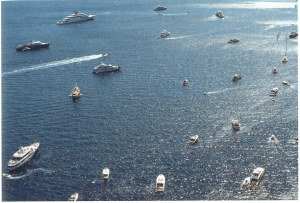In class today, we had to do an audiovisual project combining photos with the spoken word. For our project, I like the idea of overlaying visuals from one place with audio from the other. That would work well if we do end up focussing on the idea of disjointed, dissonant audio and visuals discussed in my first blog.
Even if we don’t end up overlaying opposite audio and video, I think the spoken word could add an interesting layer to this project. Having a voiceover address what isn’t visible in the shot is a really intriguing way of making a more involved experience. The Audience hears things they can’t see being described by the voiceover, and that makes them imagine what else is in the location that isn’t in that shot. I think it might be a good way to add depth to whatever we end up shooting at our locations.
We also focussed on how text impacts the visual elements when they aren’t really related, or at least, when the text doesn’t describe the picture directly. One such example was Blind Spot by Teju Cole. One particular image stood out to me; Capri. A photo of the Mediterranean sea littered with boats sits on one page, a quote from the Iliad and some descriptors of the “fleet” sits on the other. What initially stood out to me as a calm, relaxing image of Yachts, shifted into a chaotic, rapid, almost military-like image because of Teju’s text. It doesn’t really describe the image, it just shapes what the audience notices. The reference to the Iliad, the term of an “apparition of a shining fleet” and the quote “We know about these beautiful waters that have death in them” all helped shape and change what I initially saw. This furthers the point that text can be a very useful tool when trying to influence the noticing of the audience, which I think could be used for our contrasting audio-visual experience.
References:
Cole, T. (2017). Blind Spot. New York: Random House, Capri.

